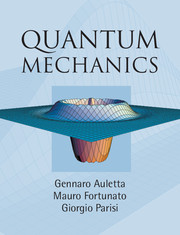Book contents
- Frontmatter
- Contents
- List of figures
- List of tables
- List of definitions, principles, etc.
- List of boxes
- List of symbols
- List of abbreviations
- Introduction
- Part I Basic features of quantum mechanics
- Part II More advanced topics
- Part III Matter and light
- Part IV Quantum information: state and correlations
- 14 Quantum theory of open systems
- 15 State measurement in quantum mechanics
- 16 Entanglement: non-separability
- 17 Entanglement: quantum information and computation
- Bibliography
- Author index
- Subject index
17 - Entanglement: quantum information and computation
Published online by Cambridge University Press: 05 June 2012
- Frontmatter
- Contents
- List of figures
- List of tables
- List of definitions, principles, etc.
- List of boxes
- List of symbols
- List of abbreviations
- Introduction
- Part I Basic features of quantum mechanics
- Part II More advanced topics
- Part III Matter and light
- Part IV Quantum information: state and correlations
- 14 Quantum theory of open systems
- 15 State measurement in quantum mechanics
- 16 Entanglement: non-separability
- 17 Entanglement: quantum information and computation
- Bibliography
- Author index
- Subject index
Summary
In this chapter we shall deal with the most recent and challenging development of quantum theory, and also one of the most important ones for interpretational, foundational, and even technological issues. This field finds its roots in the observation that quantum states can be viewed as bricks of information in a way that is intrinsically different from classical information. As a consequence, the ability to manipulate quantum states translates immediately into a new form of information processing and exchange. What has been discovered during this conceptual passage is that this type of information processing is in many respects much richer than its classical analogue. This has contributed to the understanding of quantum states as an extension of the classical concept of state and not as a defective reality (see also Subsec. 2.3.4 and Sec. 15.5). The impossibility of knowing the value of all observables at the same time that had been seen as a strong limitation in the early days of quantum mechanics, now turns out to be a manifestation of a different – but not necessarily poorer – resource. On the contrary, we have increasingly discovered that superposition and entanglement are additional informational resources. These resources, for instance, allow for certain particular computations that are much faster on a quantum device than on its classical counterpart, and therefore the former is able to solve problems that cannot be practically solved using classical means.
- Type
- Chapter
- Information
- Quantum Mechanics , pp. 628 - 673Publisher: Cambridge University PressPrint publication year: 2009



